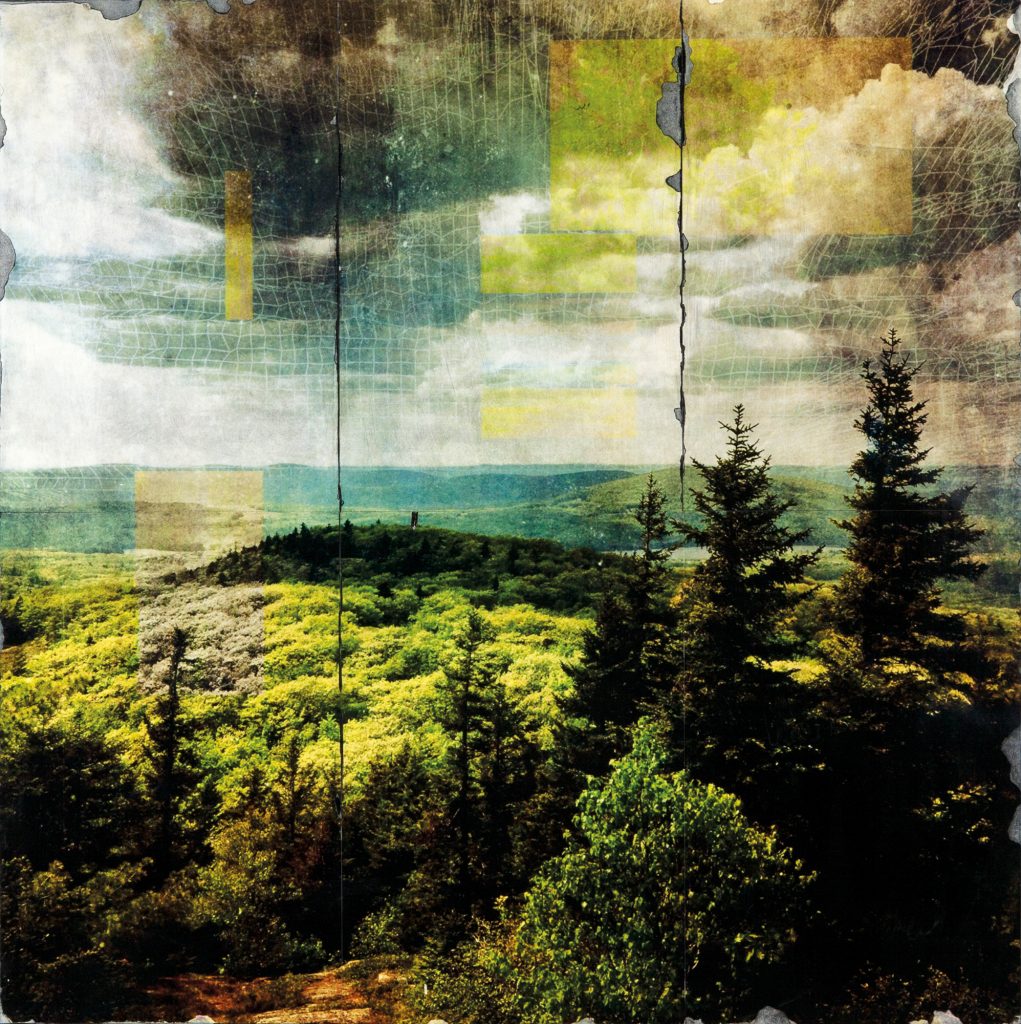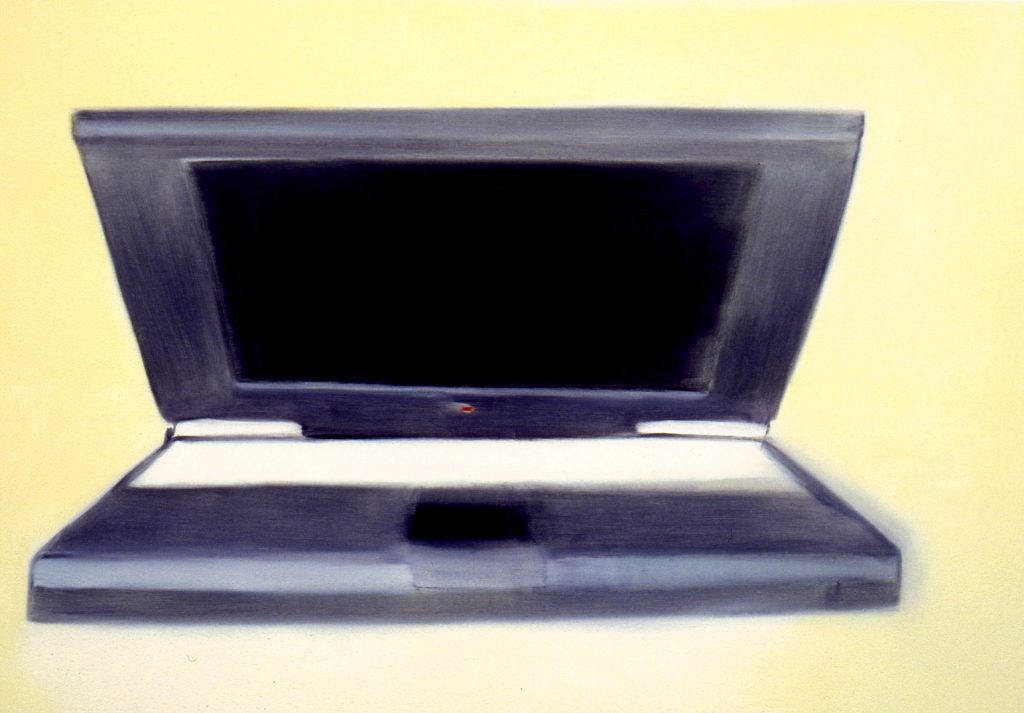Kiley Ames: Fragmenting the Figure


“I like the contradiction of a really raw and simple material combined with these fragmented pieces. That’s how I see my life and people in general,” remarks Kiley Ames on her emotionally resonant and richly symbolic figurative art. In her textured paintings on burlap, Ames renders the human form into a countless series of pointillist-style splotches that alternately combine and separate to represent the multitude of moments, experiences and memories that make up our identities. Expanding her range of possible mediums, Ames also constructs sculptures, converting the tactile bodies in her paintings into tangible three-dimensional objects.

Taking us through her Gowanus studio, Ames also showed us her newest artistic endeavor: printmaking. Using her sculptures as her models–a closed circuit of creative inspiration, Ames’ prints feature a linear aesthetic that unexpectedly corresponds to both her paintings and sculptures. Admitting we were the first to see the prints in person, started just days earlier, Ames revealed her constant curiosity and ongoing dedication to experimentation.

Standing in her studio on a sweltering May morning, we spoke with Ames about her transition to painting on burlap, the connection between her disparate mediums and the recent revival of figurative art.


The first thing I notice when looking at your paintings is their unique texture derived from using burlap as a material. When did you first start employing burlap and why?
I used to only paint on panel–really smooth panel–up until I graduated from graduate school. As I was graduating, I wasn’t happy with how I was trying to articulate my concept, the image and the imagery. I felt like the images themselves were fine and getting a good response but for me, it wasn’t working. An instructor suggested I try a material that worked against me–that was the complete opposite of what I had tried. It was almost as if I had become too comfortable using panel.
That summer, I got a residency in Beijing and Shanghai. We were put in an area of Beijing where it was non-English speaking and we were really immersed in the culture. I thought what better time to try something totally opposite. So I got some burlap. I actually got a piece of burlap before I left but didn’t have time to experiment with it. I was working with a brush when I tried it, which is very different from what’s going on now. My friend is from Beijing and helped me get some burlap.

In China, I had this conflicted feeling of finally getting residencies in different cultures but also feeling so separate and isolated from society. We didn’t even have Internet access. I was trying to find a way to communicate how I felt as if you have all these isolated pieces of your life–or at least I do–which are fragments. But at the same time, all these pieces can come together, overlap or get really complex and almost congested. That’s how I was feeling. I wasn’t sure how to paint that and I certainly didn’t think a brush was good. I picked up a palette knife, which was completely new to me. I basically started trying to see how the individual pieces of paint could create forms and imagery speaking about this feeling of all these pieces coming together to create something beautiful and disquieting at the same time. The burlap was perfect for that because it can be very porous and, depending on the burlap, can be tightly woven. It’s always something different. I never knew how the paint was going to react and you can’t erase anything. You can add to it, create something even more complex, thick or textured with that sculptural quality.

With these different fragmented strokes of paint, your paintings contain a distinctive psychological aspect, which is unusual in traditional figurative painting. What inspires you about merging the psychological and the figural?
I always grew up with psychology as a part of my life. Just from a personal standpoint and a family standpoint. My mother is a neuropsychologist so it was always encouraged. My mom didn’t go back to school until her mid-40’s. We were old enough to grasp some of the concepts she would talk to us about. I had a very complex upbringing, which made me even more interested in how people relate to one another. I think it’s really difficult sometimes to articulate that just in form. I didn’t see life as this one cohesive figure. I used to paint more photorealistically, which I find beautiful, but I didn’t see life like that. I was really struck by Expressionism, Fauvism and even, Abstract Expressionism with their psychological use of color. For me, this was an opportunity to really explore that psychological use of color, which I hadn’t been doing at all in my previous work. It was all realistic color palettes and painting style.
You also create sculptures with burlap and a similar color application to your paintings. How did you begin making sculptures and what is the relationship between your paintings and sculptures?
I came back from China and instantly had to start working part-time. I felt as if I was going crazy because I didn’t have time to evolve the work. I went to Germany on a residency, which was great. The people there hadn’t seen my work at all and they kept commenting on how sculptural it was. I really didn’t think about it. I had never made sculptures before. I made one anatomy sculpture in school and I was told not to do sculpture but to stick with painting, which was really encouraging and uplifting for a student.
I thought it was a great time to experiment. A friend recommended paper clay because it was easy and you didn’t have to fire it. I was living with 16 people and a really close friend of mine was a dancer. We were talking about Pina Bausch, Martha Graham and even, Baryshnikov–just a huge range. Pina Bausch was this dancer that affected me so much because she was able to capture these moments between the fluid movements–these awkward yet very significant moments. I thought, “Alright. How can I try to do that?” The first sculpture fell apart twice. All the poses came from these ideas of moments between moments. It’s such a different way of working than painting. With the paintings, for the most part, the imagery is thought-out.

It seems like for years figurative painting was largely ignored by the contemporary art world but recently with painters like Nicole Eisenman, figurative painting is on the rise–
Nicole Eisenman and Frank Auerbach are my two favorite contemporary artists. I’ve known about both of their work for years and it’s interesting to see them gaining more and more visibility. I think it’s cyclical–that’s good and bad. I don’t think it’s necessarily driven by aesthetic. There was something that was said when I was in China that stuck with me. It was from a really well-known artist that we were fortunate enough to listen to and have translated. He was talking about Western art versus Eastern. He said that the art movements in Western thought are always based off of the last movement. Expressionism leads to Post-Expressionism and then, Abstract Expressionism. It’s always based off another and going forward; whereas Eastern art looks back to the past. They’re not looking at the previous movement. They’re looking at their history. I thought it was a really lovely way of saying you can take every single thing from history that you love and create it into your own. It gave me the comfort of saying that I’m a figurative artist.

Which brings me to my question, what inspires you about the figural?
It’s a way that everybody can relate on some significant level regardless of your culture or history. It’s an identifiable form that is always interpreted differently. You can have these beautiful psychological landscapes like Van Gogh, but the figure is how I see the complexity and contradictions of humanity. For me, trying to relate that to abstraction or landscape hasn’t appeared in my work. I haven’t found a way to articulate the contradictions, complexity fragility and beauty. People do that. I think they are the most complex, disquieting and beautiful subject form that I know.
That’s what I want viewers to think about. I want them to see the beauty. I want them to be uncomfortable or maybe just walk right by. It’s hard because there’s an instant judgment. And just like in real life, that’s challenging. I think that’s the beautiful thing about painting and the figure is someone can say, “No–not for me” and walk away, but they still might think about it. They can think about why they weren’t attracted to it, why they were annoyed that they’re still thinking about it or why they love it. That’s how you react to other people too. If you hear a song or read a passage from a book, you can stop it mid-sequence. But a painting, you see in a moment.









Responses